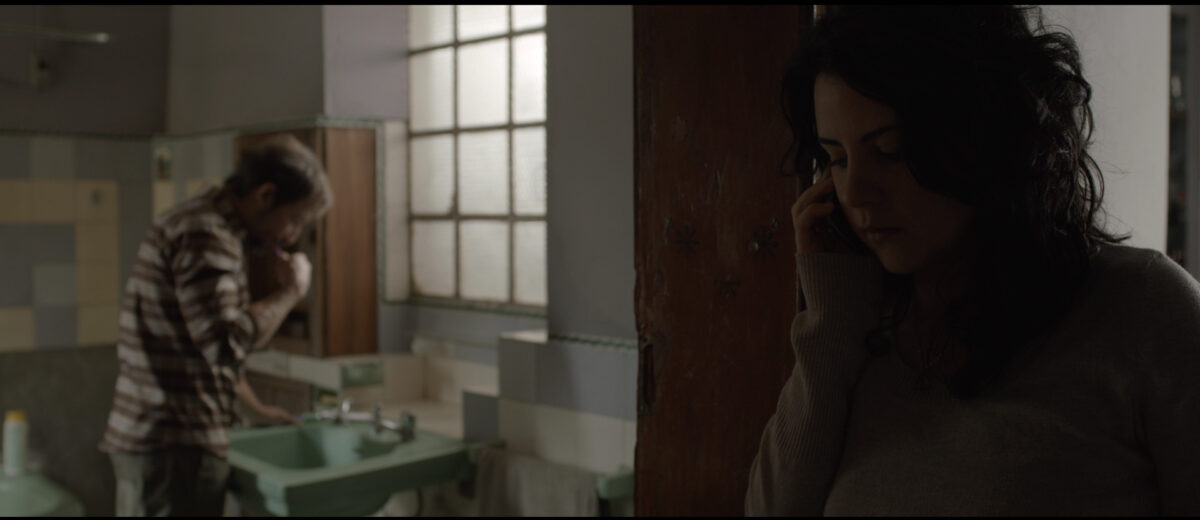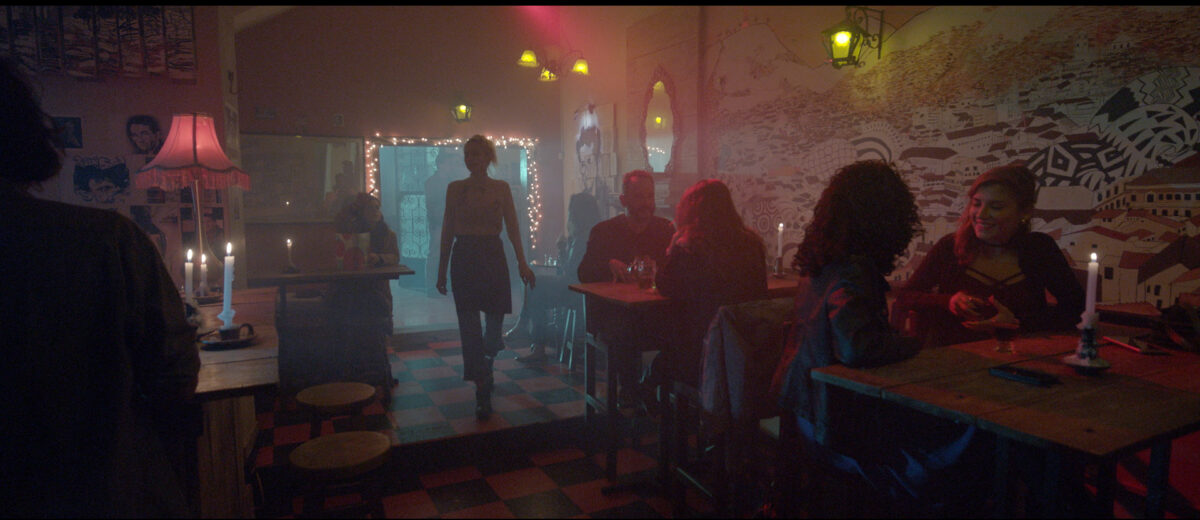Olivier Auverlau on shooting Yellow glasses in Ecuador
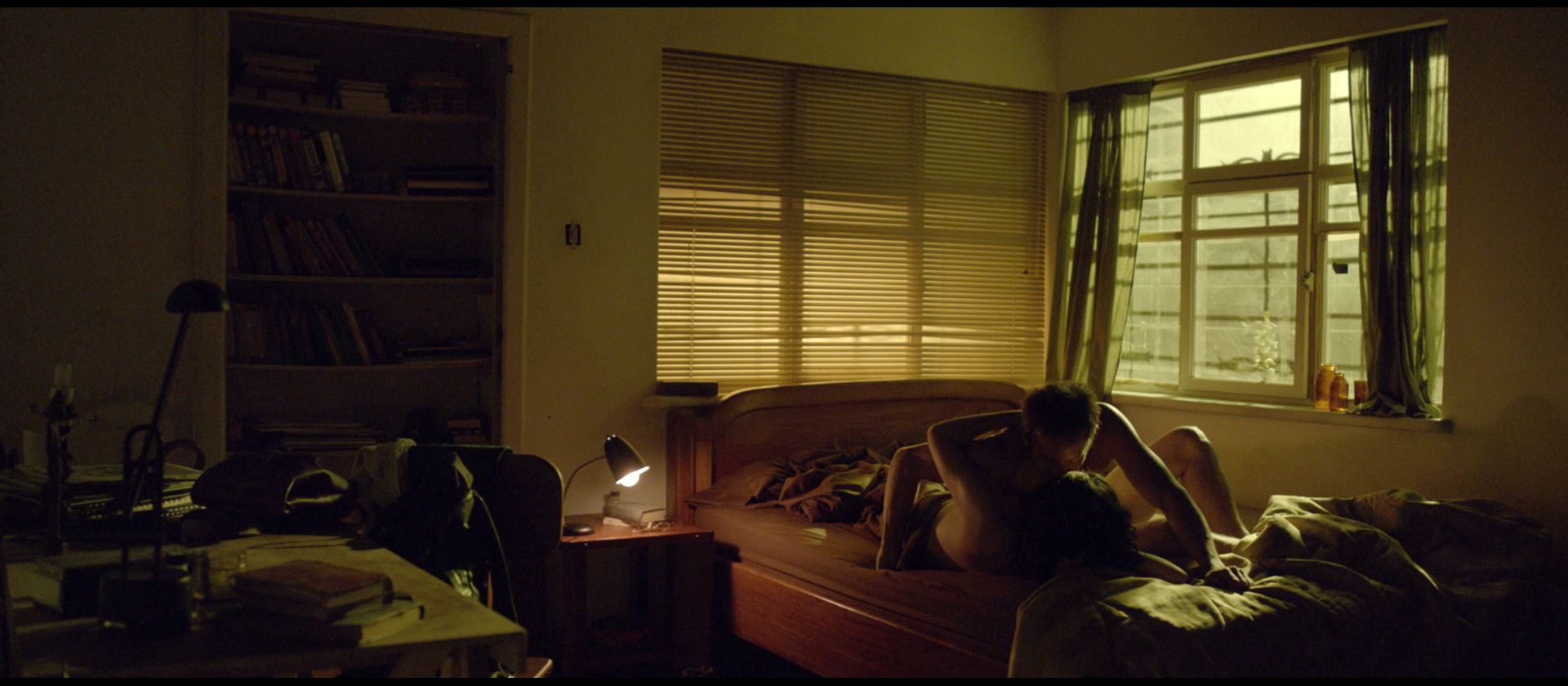
Cinematographer Olivier Auverlau sbc teamed up with director Ivan Mora to shoot the film “Yellow glasses” on location in Ecuador. The film recently won best cinematography awards at the Orlando film festival and the Kunturñawi film Festival.
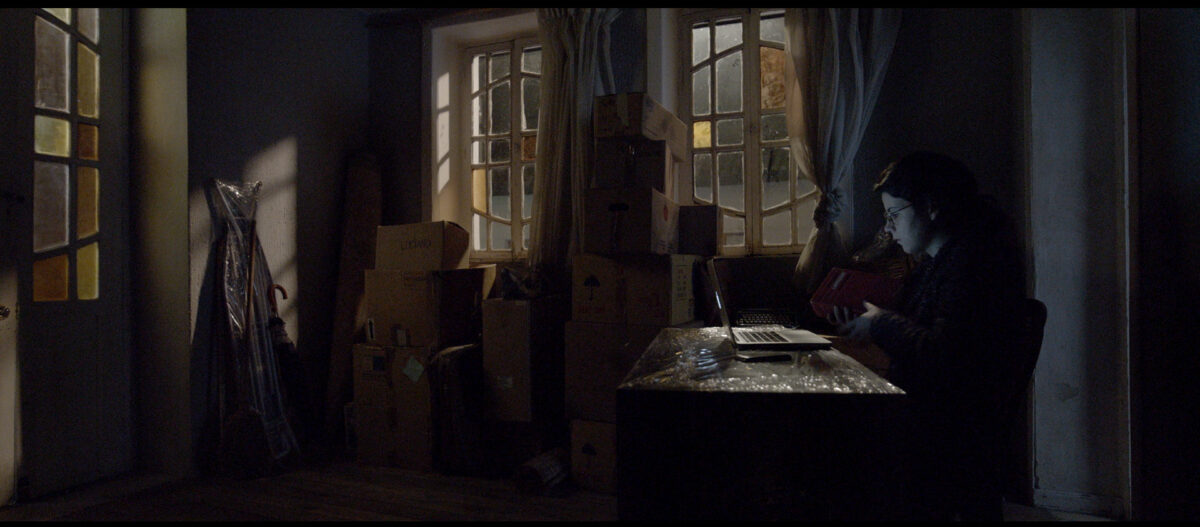
Olivier Auverlau: “Yellow Glasses” tells the story of a 30-year-old woman who, after a love breakup, moves to a cold apartment surrounded by unpacked boxes and where she faces the small daily conflicts of loneliness. She is a woman who is reconfiguring who she is.
It’s a story of being lost in life, looking for answers…
The main character evolves from the beginning to the end of the film, an emotional slope that slowly becomes tenser, and the photography had to portray that change in a subtle way.
Considering my previous work and the films we had made together, the director knew that one of my interests in cinematography is to create a mood that connects with the intimate emotions of the characters.
He was looking for versatility to bring the sets to life and I had the background to do so. We had discussed before that this film was going to be a completely different approach than his previous feature film. … For this one, he wanted an ultra-light shoot with lots of freedom in movement on the set.
To convey the narrative and the mood of the film we wanted stable images using a tripod and dolly… no handheld, and in terms of staging, almost the whole film was conceived as a series of sequence shots. We had to stage the actions of each scene based on the camera movements during the filming.
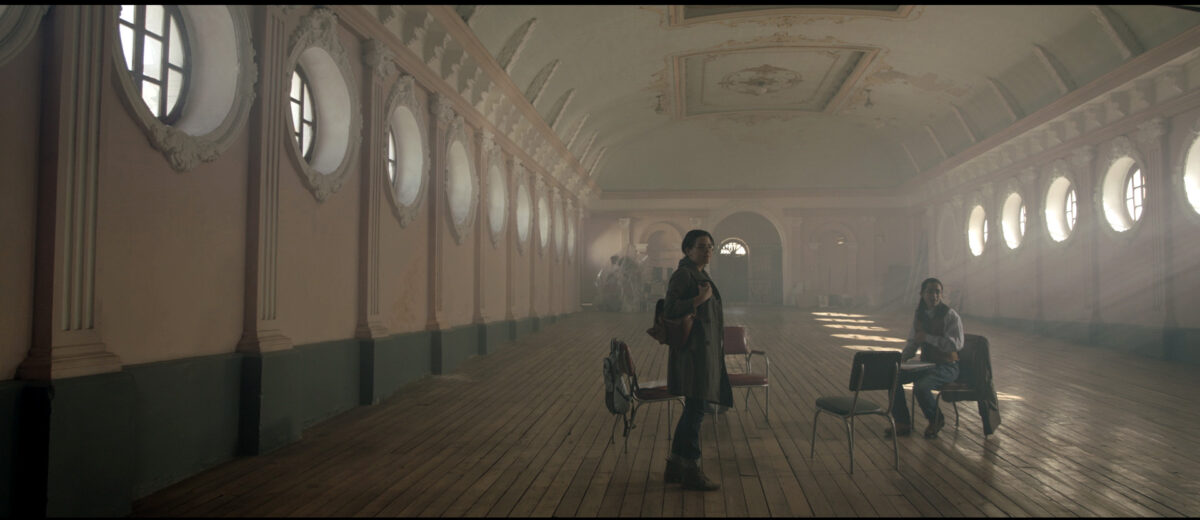
So for some shots like a long circular dolly shot, set on location in an old theater hall from the 19th century, with round portholes of light on each side, and without the possibility of putting any artificial light, I, therefore, had to mount on the dolly large flags around the camera to create negative fill without ever having any front light on the camera side. Throughout the shot, the “negative fill” therefore rotated with the camera. The actors sometimes moved around the dolly during the eight turns to go from foreground to medium or wide in the shot …
In terms of lighting, we had decided to work with a small package consisting of 2 LED panels with small batteries, a 150watts LED spotlight and 4 or 5 small LED cubes with AA batteries, to which I taped blackfoil to narrow the light beam … this made it possible not to have to rent a light truck or a generator, just a small lighting suitcase. This allowed us to travel between sets very quickly. And the floor was kept free from equipment to allow for the movement of the actors because the lights were so small. The 150-watt LED spotlight was a Chinese dimmable photo light, so it could be boomed out from the upper floor window of a building with a lightweight stand and controlled by the gaffer’s phone. I only needed one light for all the night scenes. The rest were “practical lights” … as backup sources.
The film takes place in Quito, the capital of Ecuador, a region without seasons and at 2800 meters above sea level. There is a limited amount of daylight hours from 6:30 am to 6:30 pm throughout the year. And with a mountain climate which changes a lot during the day… one can start the day with blue sky and full sun at 8 am, hailstones at 11 am, then the sun reappears with large white clouds and very quickly it gets dark just at 6.30 p.m. sharp. As the film was a continuation of sequence shots, and thus without the need for light continuity, working with natural light was the way to go, using black, white, colored fabrics, mirrors, curtains. If the light changed during a shot, that was okay. We found it even very interesting and we adapted to it during the shoot… it seems complex, but it worked… On other films, I often work differently, with more resources. Large areas are often covered by silks because the sun is blazing outside and at noon it’s zenithal! That is what it’s like in Quito but in other parts of the country, it’s different. We have the Pacific coast, the Andes with mountains up to more than 5000 meters, and also the Amazon, which makes for a lot of different environments.
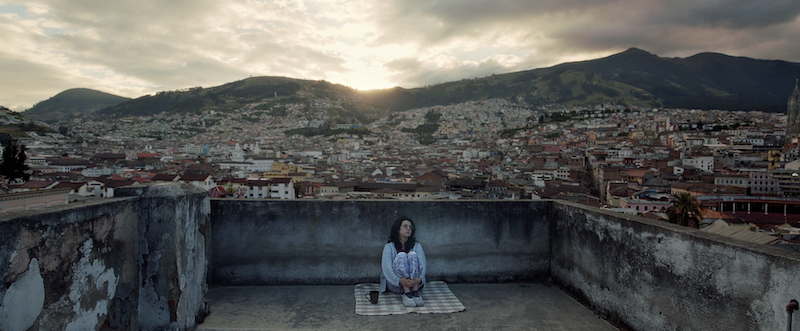
My first visit to South America was Cuba in the early 90s, for a documentary. Later on, in 1992 I went to Ecuador to shoot a period drama set in the 60s on military dictatorship. In those years, there were few productions in Ecuador, and the available equipment was limited to the point that I had to convert a 16mm Frezzolini camera to super16mm with a file and by gluing pieces of fine metal on the mirror to cover the “new” format… the viewfinder remained in 16mm. So I had to imagine the extra piece of the image we were capturing when framing. In terms of lighting equipment, almost darkness! So I had to imagine and find alternative ways to the lack of recourse, to learn to overcome these obstacles on each film shoot. Those types of shooting conditions marked the first part of my career.
From the moment I arrived in Ecuador, I was fascinated by the quality and complexity of the contrasty daylight, by the people and the landscapes, so I settled down there.
In addition, I understood that there was still a long way to go in their nascent cinema industry and that I could be part of it.
There were no rental companies, no camera repairers, I had to collimate and adapt the lenses myself. To overcome this, and to be able to continue to develop my work with more freedom, little by little I acquired my own camera equipment and over the years created my collection of various lenses.
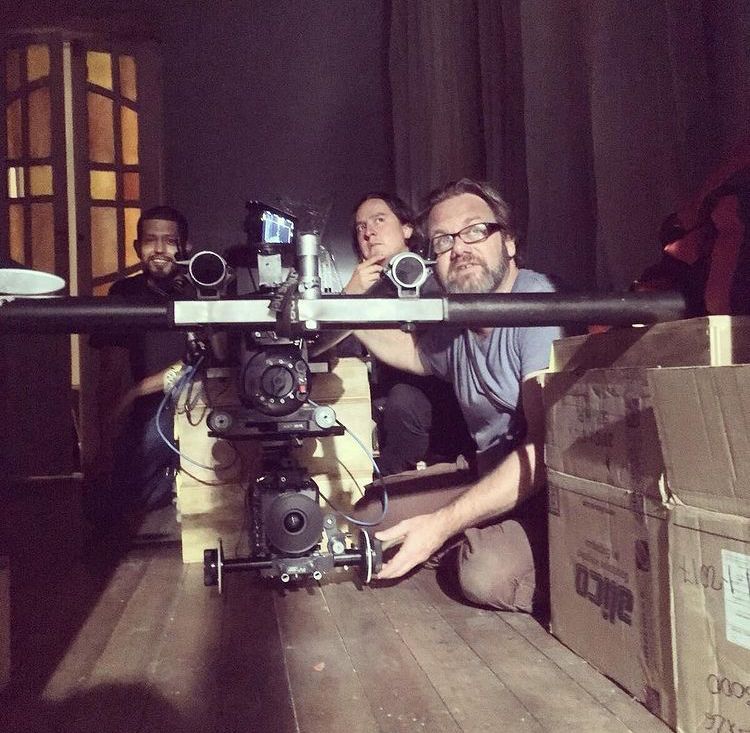
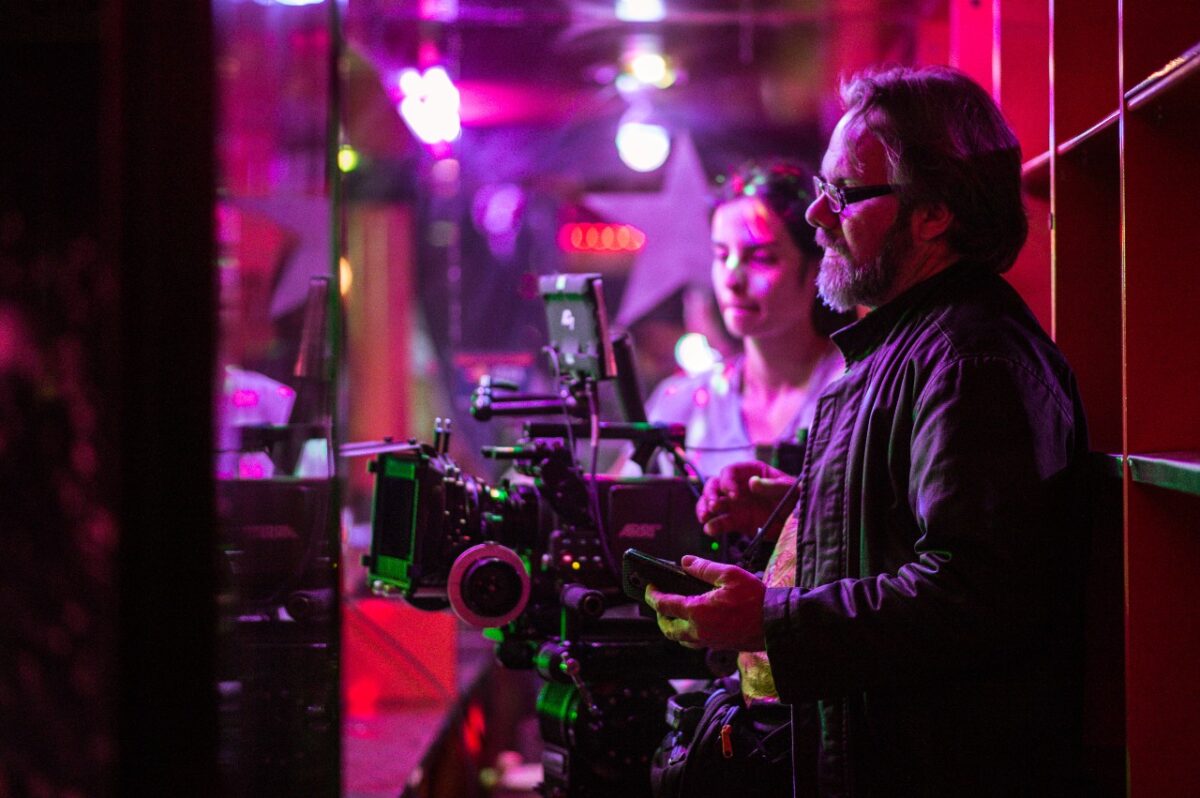
After some time a few big productions came to the country shooting in an American style of working. At one point there was this movie with Russel Crowe and Megg Ryan, on which I worked as a camera operator for 3 months. These shoots helped the technical crews in Ecuador to professionalize. Then, with the creation of the CNC in Ecuador, domestic productions really started to take flight.
I have also been shooting commercials there for 27 years.
About ten years ago, there was a law obliging commercials that were broadcast in Ecuador had to be shot in the country. And that changed everything! With all these commercial film productions for the Latin American market that started to shoot in the country, came a boom in infrastructure investment and technician training… the level of filming was synchronized in quantity and international quality with other neighboring countries. It has also contributed to the film industry, with the arrival of large quantities of high-end equipment, lighting, cameras, etc. Making them available for the narrative productions of the country. Over the years, I have followed the call for projects and therefore shot in Uruguay, Paraguay, Argentina, Colombia, Peru, Chile, Brazil, Mexico, Cuba, as far as Latin America is concerned. More recently, I have been working between South America and Belgium.
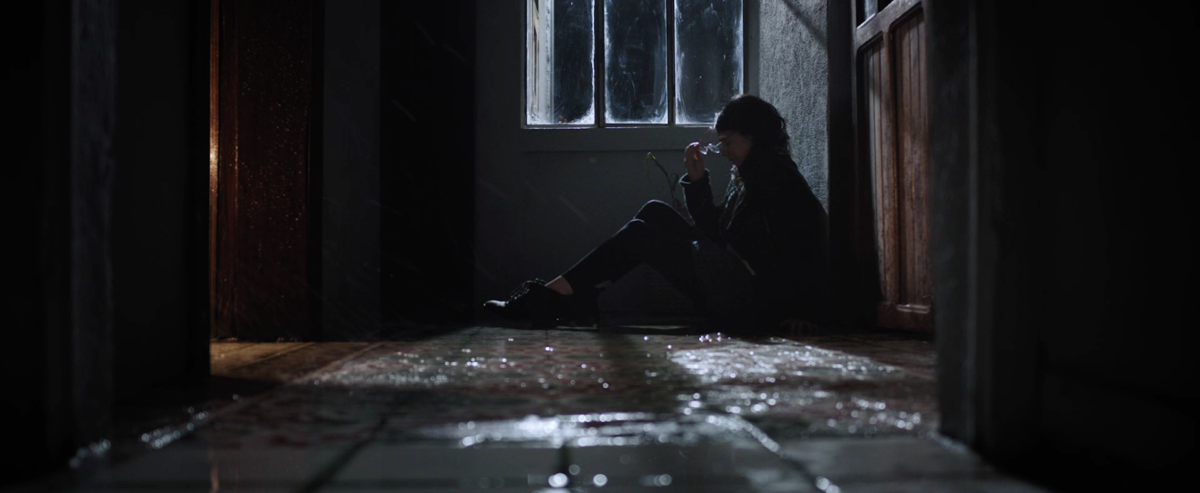
Film productions in South America come from another culture, different social realities, different histories.
At the production level, in most cases, the director is the locomotive of the project and they are the ones who put together the projects and who remain the owners of the rights to their films. It is an independent cinema. The producer is a partner generally engaged to take care of the production. The budgets are often much smaller than in Belgium, a normal feature film is often made with a budget between 250,000 to 350,000 … there is sometimes the occasional “big budget”.
It is, therefore, necessary to use a cinematographic language that is inventive, which resolves certain issues that the budget does not allow for … without diluting the overall intent! I always try to create images that reflect the spirit of the film and are feasible within the restrictions of the production. Often films start to shoot without having all the funding secured … it has always been for years a complex adventure, but with a passion throughout for the medium, which has not diminished. We all know each other, it’s a big family … Now that has changed a bit when it comes to co-productions. Or with the new production conditions.
Working with the director on this particular film was in a free-flowing manner, completely different from his previous film which was very much staged, with precise flashbacks and time frames. So while reading the script and shot listing it we decided on the visual language we were going to use and the precise position of the camera in the sets, we nevertheless kept the freedom to adapt during the shoot according to the input of the actors. Having worked together on several films over the years has created a truly fraternal relationship, a curiosity that complements and mutual trust, which grows with each project.
